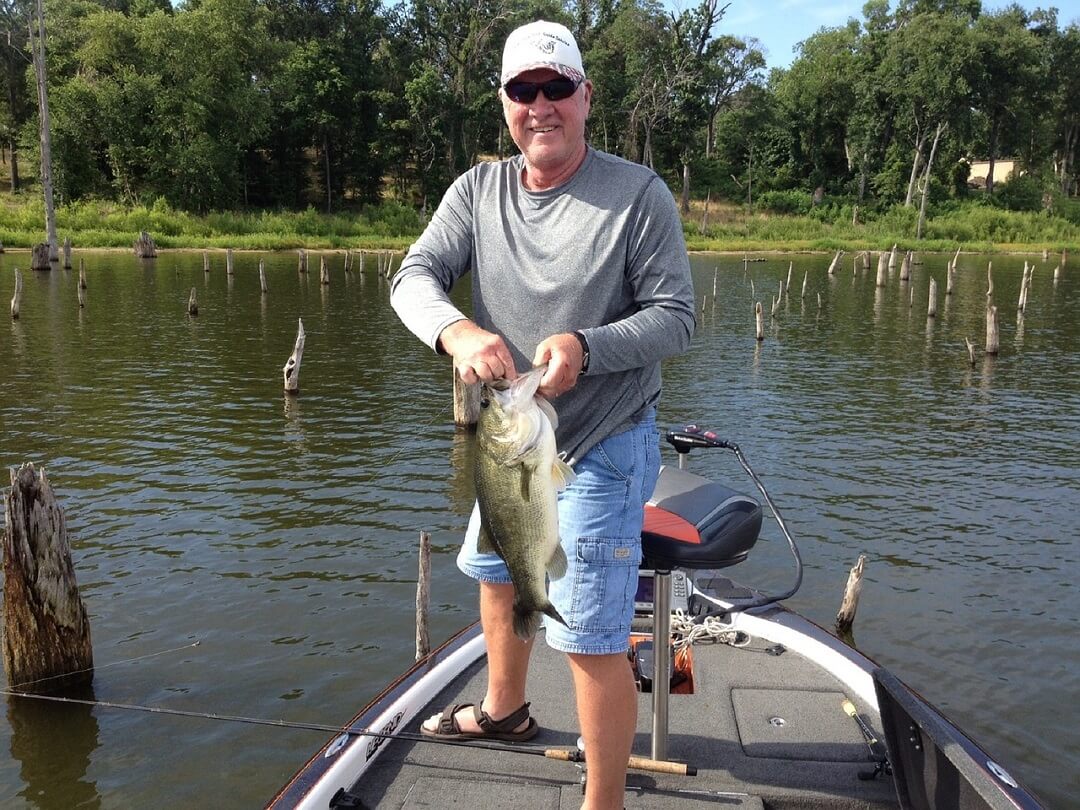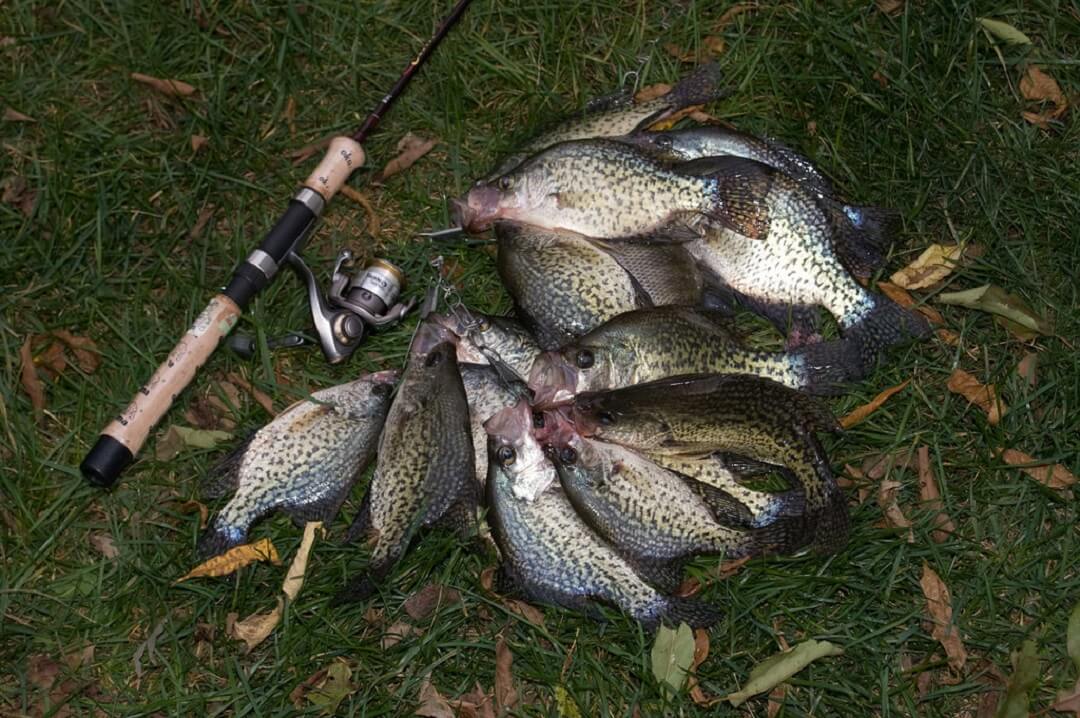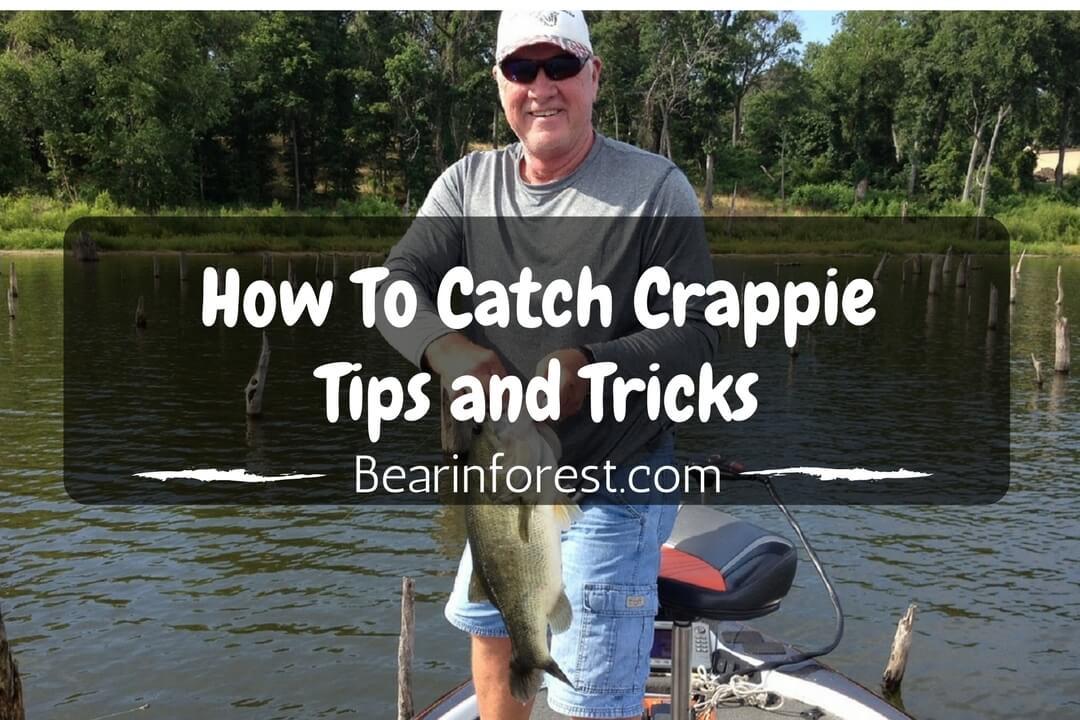The crappie is a popular fish with anglers. It's found all across North America in two species, the white (pomoxis annularis) and black (pomoxis nigromaculatus) crappie.
The main difference between the two is in appearance. White crappies are overall more silverish in color, with darker markings that appear more uniform and striped.
The black crappie is more reddish-brown along the sides, with mottled spots that are notably denser along the spine than the pale belly. However, local breeding populations can affect coloration. The black crappie has seven spines in its dorsal fin where the white crappie has five.
Otherwise, they are quite similar in size and habits. They can be found in freshwater of all kinds, but do best in waters that have abundant vegetation and slight acidity. When young, they live on microorganisms, but as they grow to adulthood, they turn to insects, minnows, and the young of other species.
Crappies are relatively small compared to other gamefish. The world record black crappie weighed 5 pounds even, while the record white crappie was only slightly larger at 5 pounds and 3 ounces. Typical weights are more like 2-3 pounds, but the crappie is a hard fighter for its size.
How To Catch Crappie Tips and Tricks
Spring Fishing

Springtime is the spawning season for crappies, and they tend to breed in the shallower waters near shores and bank of the river.
Spawning activity is usually stimulated once water temperatures reach 55 degrees Fahrenheit, so that could be as early as mid-March on southern regions or as late as May in northern waters.
During spawning season, you can often see them active in clear, shallow waters, so anyone with a small minnow and a bobber has a good chance of catching a few.
The clarity of the water may also affect how deep they will spawn. In murky waters, they might prefer to spawn at depths of two feet or less, while in very clear waters this can be much deeper.
The best way to catch them is from a boat, using a trolling motor and a jig of not more than 1/8th of an ounce along the shores. If you have a fish finder, locate underwater structure such as fallen trees and brush or rock piles, or even gravel banks.
In this case, you can actually cast your jigs right up on the rocks and slowly drag them into and across the shallows. Crappies aren't particularly skittish and may follow a lure right back to your boat.
Summer Sunshine
As the weather, warms up the crappie tend to head deeper into cooler water. Fish around bottom vegetation and obstructions at 15 to 20 feet in depth. Vertical jigging close to cover can pay off. Use small-to-medium fluttering spoon or spinning jigs to attract attention.
Try fishing around concrete pilings or docks at a depth of around 20 feet. You might have the best luck just sitting still and dropping a weighted hook with a shiner to 15-to-20 foot depths. If the fish aren't where you expect, drop your bait a little deeper. If you aren't getting strikes, move to the next stop.
If you prefer to fish shallower depths, you might try some cooler night fishing, as this will bring the crappie closer to the surface. Night fishing with submerged lights also attracts baitfish that might bring the crappie closer.
Fishing in Autumn
Crappie tends to become more aggressive in md-to-late fall, such as mid-October right up through Thanksgiving. They tend to feed at shallower depths of 10 feet or less, so this is a good time to hit the shores again.
Cast your favorite jig along edges or into narrow corridors like boat slips or canals. Let it sink for a few seconds, then retrieve it slowly.
Winter Weather
In cold weather crappie move to deeper waters of up to 40 feet, and becomes less active, but they'll be there until the next warm spell. They aren't up to chasing a fast lure, but retrieving very slowly can prompt nearby crappie to strike.
Crappie also tend to gather together in winter into larger schools that may occupy a limited territory. For instance, they may gather to one side of a brush pile but not the other. If you've found these spots throughout the year, northern anglers may find ice fishing with shiners at these depths productive.
Technique

Asking for advice from experienced anglers on catching crappie may get you a dozen different answers, because there is no one technique that will work every time and everywhere.
The best advice is to find a location that produces decent-sized crappie and explore it with different baits, lures, and techniques until you know what works best there.
A good strategy is to fish where there's wood cover in the shallows during spring and fall, and move out to deeper water in the summer and winter. Crappie are very dependent on temperature, so that a warm spell in January can bring them back to the shallows, or a cold front in May can send them back to the deep spots again.
Remember that crappie like to strike from cover, whether it's a rock pile of heavy vegetation. Use brightly colored vertical jigs and weedless jigs and you should do fine.
Note the depth ranges where you're getting hits on any given day and try to stick within that. It also pays to put live bait on bobbers at the right depth and just be patient.
Keep in mind that crappie tends to have a "soft" lip, so sudden jerks may actually tear the hook loose. Use a #6 hook and give the crappie a little slack when they struggle hard.
Crappie is a schooling species and may travel with other pan fish. Don't be disappointed if your casts produce other, smaller fish. This could still indicate the presence of crappie. During the winter, other species may go into semi-hibernation, but crappie don't. This will increase your odds of catching them in colder weather.
(Guest Post by: Masud Rana at https://www.fishfinders.info/)
